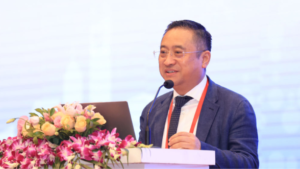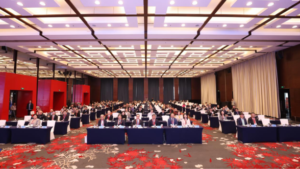![[ People's Daily ] Asian organ transplant symposium held in Shanghai focuses on organ shortage and transplant safety 1](https://www.transplantation.com.cn/wp-content/uploads/2024/11/image-15.png)
People’s Daily Client Shanghai Channel Jiang Hong Bing 2024-11-24 23:03
On November 22, the Asian Organ Transplantation Conference, an international academic conference organized by Sun Yat-sen Hospital affiliated to Fudan University and accredited by the International Transplantation Association, was held in Shanghai.
The reporter learned from the meeting that the shortage of transplantable organs is a common medical problem faced by all countries. Since our country started the pilot of organ donation in 2010, remarkable achievements have been made in system design, social mobilization and standard process, and a sound working system has been established, both the quantity and quality of organ donation and transplantation have been improved. However, according to the China Organ Transplantation Development Report (2021) , the organ donation rate per million population in our country is 3.73, which still lags behind the international advanced level.
In the case of a kidney transplant, each patient would have to wait five to 10 years for a valuable donor, Zhu Tongyu, vice president of the Fudan University Shanghai Medical College and a professor in the Kidney Transplant Department at Sun Yat-sen Hospital, said in an interview. There are more than 140,000 people registered for organ transplants in China, but fewer than 20,000 patients receive transplants each year, according to 2023 from China’s organ distribution and sharing system, leaving a yawning gap between supply and demand.
Zhu Tongyu said that in recent years, driven by new technologies such as gene editing, great progress has been made in xenotransplantation with pigs as donors. At present, several cases of kidney, heart and other organs from pigs have been transplanted into humans, cases that can survive for months. However, there are still problems to be overcome for pigs to become human organ donors. The biggest problem is that there are 23 pairs of human somatic List of organisms by chromosome count and only 19 pairs of pig somatic cells. Pig organs have to be genetically edited through technical means to be used as donors, then there are the challenges of zoonosis and immune rejection. There is still a long way to go to achieve porting.
Professor Zhou Jian, head of Zhongshan Hospital, said tackling the acute organ shortage would require more than just improving the existing organ donation and distribution system to ensure it was fair, transparent and efficient, at the same time, technological innovation also plays an indispensable role. He mentioned that as the country’s first approved comprehensive National Medical Center Construction Project Unit, Sun Yat-sen Hospital affiliated to Fudan University is one of the few comprehensive hospitals qualified for heart, liver, kidney and pancreas transplantation in our country, it has pioneered many technological innovations in the field of organ transplantation, such as the first sequential heart, liver and kidney transplantation in Asia, and the first combined heart and liver transplantation in Asia, the world’s first“Relative liver” and“Abandoned liver” double donor liver transplantation.
In addition to the problem of organ origin, transplant patients also face the hidden dangers of immunosuppression. They must continue to take immunosuppressants to prevent rejection, but they also weaken their resistance to outside pathogens. How to improve the immunity of patients after transplantation and reduce the risk of infection has become another urgent problem.
To this end, professor Zhu Tongyu’s team first proposed at the meeting an innovative diagnostic and treatment model for severe and specific infections in organ transplantation. The model includes the development of new diagnostic systems to accurately diagnose pathogens, the use of phages to treat refractory bacterial infections after transplantation, and the development of BK virus vaccines to prevent viral infections, through a series of comprehensive measures to improve the patient’s ability to fight common infections, to prevent the occurrence of rare but deadly Opportunistic infection. Zhu said the study marks an important step in improving transplant safety in our country.
It is reported that since 2018, Zhu Tongyu led the team launched our country’s first clinical trial of phage therapy, and achieved a clinical improvement rate of 78.3% . During this period, the team published the first phage therapy case report in our country, as well as the world’s first case set and case paper on phage therapy for covid-19 secondary bacterial infection. In 2022, the team initiated the establishment of the Chinese Phage Research Alliance, and issued the expert consensus and group standards for the quality standards of phage therapy and phage preparations.
Editor in charge: Jiang Hongbing


